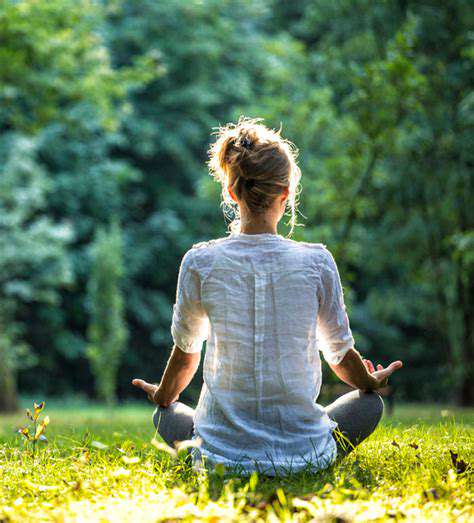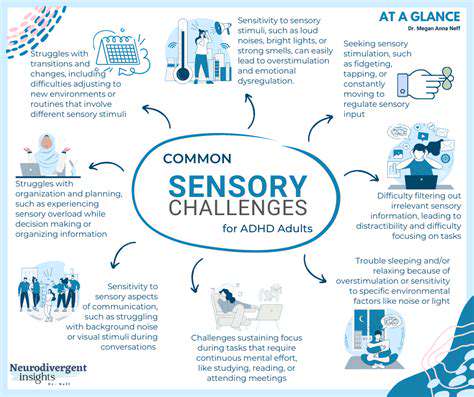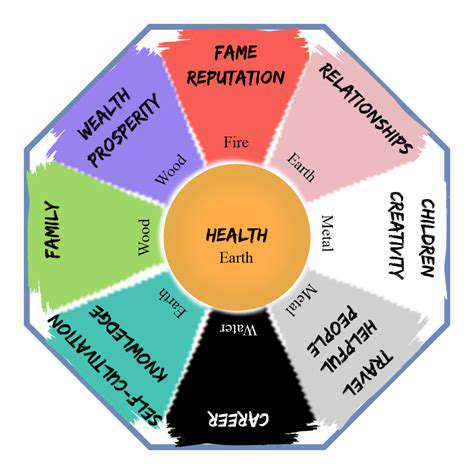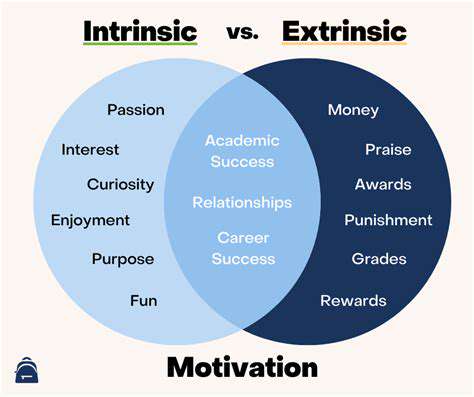Simple steps to improve sleep quality
Creating a Conducive Sleep Environment

Optimizing Your Bedroom Temperature
Getting the temperature just right in your bedroom makes all the difference for quality sleep. Research shows most people sleep best when the room is slightly cool, ideally between 60-67°F (15.5-19°C). This temperature range helps your body maintain its natural cooling process during sleep. When it's too hot or cold, you'll likely toss and turn more throughout the night.
Simple solutions like using a fan or cracking open a window can work wonders. The gentle airflow not only cools but creates a soothing white noise effect. Don't underestimate the power of good bedding either - breathable cotton or moisture-wicking fabrics help regulate temperature throughout the night.
Minimizing Light Exposure
Our brains are incredibly sensitive to light when trying to sleep. Even small amounts of light can suppress melatonin production by up to 50%, making it harder to fall asleep. That glowing alarm clock or charging phone might be sabotaging your sleep more than you realize.
Blackout curtains are worth every penny for light-sensitive sleepers. If installing them isn't an option, try a comfortable sleep mask. The key is creating complete darkness - you'd be amazed how much deeper you'll sleep when all light sources are eliminated.
Controlling Noise Levels
Unexpected noises are one of the most common sleep disruptors. Studies show that even noises you don't consciously notice can pull you out of deep sleep stages. The constant hum of city traffic or a partner's snoring can significantly reduce sleep quality over time.
White noise machines work by masking disruptive sounds with consistent, soothing background noise. Many people find the sound of rain or ocean waves particularly relaxing. If you're sensitive to noise, try different sound options to find what works best for you.
Creating a Relaxing Atmosphere
Your bedroom should feel like a sanctuary designed for sleep. Soft, warm lighting in the evening helps signal to your brain that it's time to wind down. Many sleep experts recommend using dimmable lamps rather than overhead lights in the hours before bed.
Incorporating calming scents like lavender through essential oils or linen sprays can enhance relaxation. The olfactory system has direct connections to brain areas that regulate sleep and emotions. A few drops of lavender oil on your pillowcase might be all you need for deeper sleep.
Choosing the Right Mattress and Bedding
Your mattress is the foundation of good sleep. A quality mattress should support your body's natural alignment while relieving pressure points. Most people don't realize their mattress should be replaced every 7-10 years as materials break down.
Pillows matter just as much - they should keep your head and neck in neutral alignment. If you wake up with neck pain or headaches, your pillow might be the culprit. Memory foam options often provide the best support for most sleep positions.
Establishing a Consistent Sleep Schedule
Our bodies thrive on routine, especially when it comes to sleep. Going to bed and waking at the same time daily - even on weekends - strengthens your circadian rhythm. This internal clock regulates not just sleep but nearly every bodily function.
If you struggle with mornings, try gradually adjusting your schedule in 15-minute increments. Consistency is key - after a few weeks, you'll likely find yourself waking up naturally right before your alarm.
Addressing Underlying Health Issues
Persistent sleep problems often indicate deeper health concerns. Conditions like sleep apnea affect millions who don't realize they have it. Telltale signs include daytime fatigue despite adequate time in bed and waking up gasping for air.
Don't dismiss ongoing sleep difficulties as normal. A sleep study can identify issues ranging from restless leg syndrome to circadian rhythm disorders. Treating the root cause makes all the difference in achieving truly restorative sleep.
Dietary Habits and Sleep
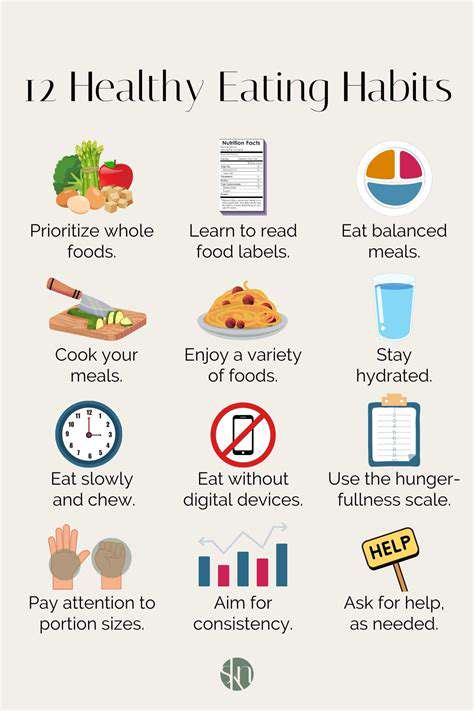
Dietary Habits and Sleep Quality
What you eat directly impacts how you sleep. Foods rich in tryptophan (like turkey and nuts) help produce serotonin and melatonin, our natural sleep chemicals. Complex carbs help tryptophan reach the brain more effectively, which explains why a small bowl of oatmeal before bed often helps.
Timing matters as much as content when it comes to food and sleep. Eating too close to bedtime can cause discomfort, while going to bed hungry may keep you awake. The sweet spot is finishing dinner 2-3 hours before bed with a light snack if needed.
Caffeine and Alcohol Consumption
Caffeine's effects last much longer than most people realize. Its half-life is about 5 hours, meaning afternoon coffee could still affect you at bedtime. Those especially sensitive might need to cut off caffeine by late morning.
While alcohol may help you fall asleep faster, it dramatically reduces REM sleep - the most restorative stage. The rebound effect as alcohol metabolizes often causes middle-of-the-night awakenings. Limiting drinks to 1-2 earlier in the evening minimizes this disruption.
Hydration and Sleep
Dehydration causes subtle but significant sleep disturbances. Dry mouth and nasal passages can lead to snoring or frequent awakenings. However, drinking too much right before bed guarantees disruptive bathroom trips.
The solution? Stay well-hydrated throughout the day, tapering off in the evening. Herbal teas like chamomile provide hydration without caffeine while offering relaxing benefits.
Timing of Meals and Sleep
Digestion requires significant energy that can interfere with sleep if happening too close to bedtime. Heavy, rich, or spicy foods are particularly problematic as they take longer to digest and may cause discomfort.
A light evening meal with lean protein and complex carbs provides sustained energy without overtaxing digestion. If hunger strikes before bed, try a small portion of cherries (natural melatonin source) or a banana (contains sleep-promoting magnesium and potassium).
Nutrient Deficiencies and Sleep
Several key nutrients play vital roles in sleep regulation. Magnesium deficiency is surprisingly common and linked to insomnia and restless legs. Dark leafy greens, nuts, seeds, and whole grains are excellent dietary sources.
Vitamin D also influences sleep quality, with deficiency associated with shorter sleep duration. Since few foods contain significant amounts, supplementation may be necessary, especially in winter months or for those with limited sun exposure.
Managing Stress and Anxiety
Understanding Stress and Anxiety's Impact on Sleep
Chronic stress keeps the body in a heightened state of alertness that directly opposes sleep. The cortisol released during stress responses is chemically similar to wake-promoting neurotransmitters. This biological reality explains why turning off your brain at bedtime can feel impossible.
Anxiety often manifests as racing thoughts when you're trying to sleep. The quiet darkness of night removes daytime distractions, allowing worries to dominate. Recognizing this pattern is the first step toward breaking it.
Mindfulness and Relaxation Techniques for Stress Reduction
Simple breathing exercises can short-circuit the stress response. The 4-7-8 technique (inhale 4 counts, hold 7, exhale 8) activates the parasympathetic nervous system, triggering relaxation. Practicing during the day makes it more effective at bedtime.
Progressive muscle relaxation systematically releases physical tension that often accompanies stress. Starting at the toes and working upward, tense each muscle group for 5 seconds then release. The contrast highlights areas holding tension you might not have noticed.
Creating a Conducive Sleep Environment
Your bedroom should be a technology-free zone. The blue light from screens suppresses melatonin production while engaging content stimulates the brain. Charge phones elsewhere and opt for traditional alarm clocks.
Consider the psychological impact of your sleep space. Clutter creates subtle stress, while calming colors like soft blues or greens promote relaxation. Small changes like fresh bedding or rearranging furniture can make the space feel more restful.
Dietary and Lifestyle Choices for Better Sleep
Certain foods naturally combat stress. Omega-3 fatty acids (found in fatty fish) help regulate neurotransmitters. Tart cherry juice contains natural melatonin and reduces inflammation linked to stress.
Regular exercise is one of the most effective stress reducers, but timing matters. Morning workouts are ideal, while evening exercise should be gentle like yoga or walking. The natural temperature drop post-exercise helps signal sleep time.
Seeking Professional Help When Needed
When self-help strategies aren't enough, professional guidance can be invaluable. Cognitive Behavioral Therapy for Insomnia (CBT-I) is particularly effective, addressing both the thoughts and behaviors disrupting sleep.
Persistent sleep problems affecting daytime functioning warrant medical evaluation. Sleep specialists can identify and treat underlying conditions that general practitioners might miss. Quality sleep is too important to leave to chance.
